Yoga Brighton
Intro Offer: First Class for £10Even if you’ve tried yoga before and didn’t get on with it, we encourage you to try yoga with us in Brighton. Our style marries the wisdom of the ancient practice with modern philosophies and the targeted requirements for our Western bodies. Yoga classes at Energy For Life are not just focused on making us bendy, but also on creating strength and tone. As well as increasing our vitality and repairing our bodies from injuries. Yoga can balance us mentally and emotionally and we feel happier and holistically healthy as a result.
We offer several types of yoga at our Brighton Studio ranging from a challenging flowing vinyasa style to a deeply restful yin practice. Have a look at the descriptions next to each class on the timetable page to get an idea of each class type. Then try them out to see which types suits you. Even in the more challenging styles, the practice can still be modified to suit the individual. So whether you are completely new to it or have been practicing yoga for years, whether you haven’t touched your toes for the last 20 years, or you are a limber ballerina, we are here to expertly guide you towards what you personally need to feel great.
All classes are open to all levels, so sign up and try a class today.
INTRO OFFER: Try a Class for £10
*Available to new participants only & max 1 per person.
What are the different styles of yoga that we teach?
We offer a breadth of styles of yoga in our warm, light and bright studio. So whatever your body needs and your heart desires we’ve got you covered.
GENTLE FLOW: This class is for you if you are newer to yoga, you like the gentler approach, or you are interested in slowing things down to really refine the poses and feel deeply the effect on your body.
STRONG FLOW: This class is for you if you love a stronger, more dynamic class. These classes are lots of fun, always different and are taught in a way as to be accessible to everyone no matter your experience.
YIN: This class is for you if you want to de-stress, unwind and relax. It’s a beautifully slow stretching class that releases tension in the body and stress in the mind.
YIN YANG: This class is for you if you want to reap the benefits of both the yang (strong flow) and the yin (soft, slow) all within one class. A great time efficient all-rounder that leaves you feeling amazing.
What to expect in a typical flowing yoga class?
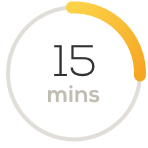
Gentle integration of movement to all joint systems in the body
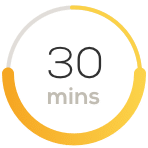
A series of standing postures joined into an easy to follow flow
Yoga poses are offered for all levels, so you can take the lighter version or challenge yourself to the max. Additionally, each yoga class is a completely unique sequence ensuring your body is always challenged in a new way.
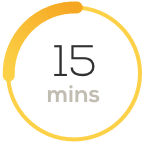
Seated postures to slow the heart rate and to return the nervous system to neutral. Ending with a relaxing meditation.
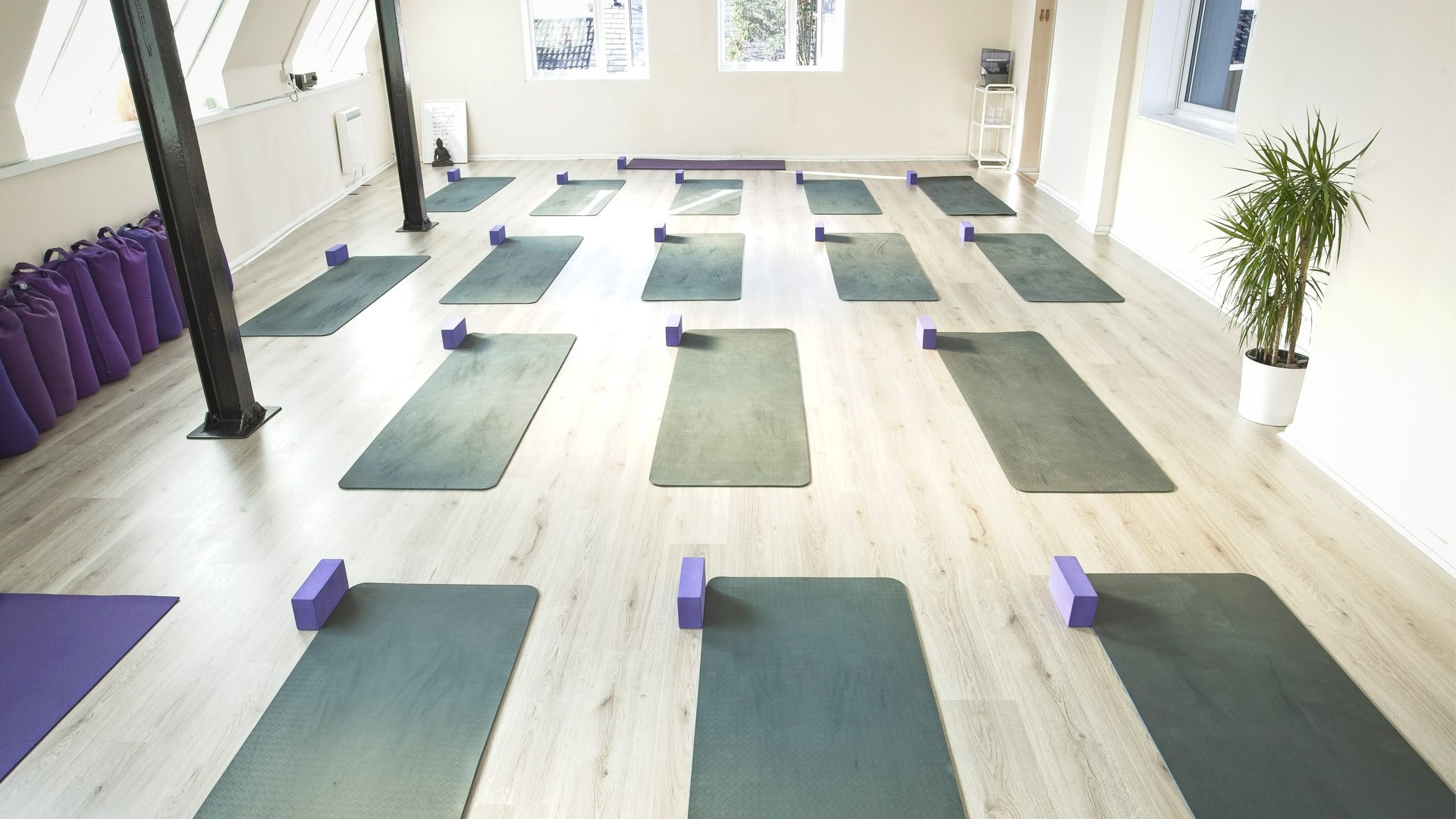
What to expect in a typical yin yoga class?
Yin yoga is very different to other styles of yoga. The whole hour is dedicated to around 8-12 postures, releasing for up to 5 minutes in each.
Most are floor poses and all are deeply releasing. This practice isn’t ‘easy’ though, as very often we find it hard to let go of deep seated tensions. When we do learn to let go the change in our bodies is incredible and we feel so much lighter, freer and more balanced.
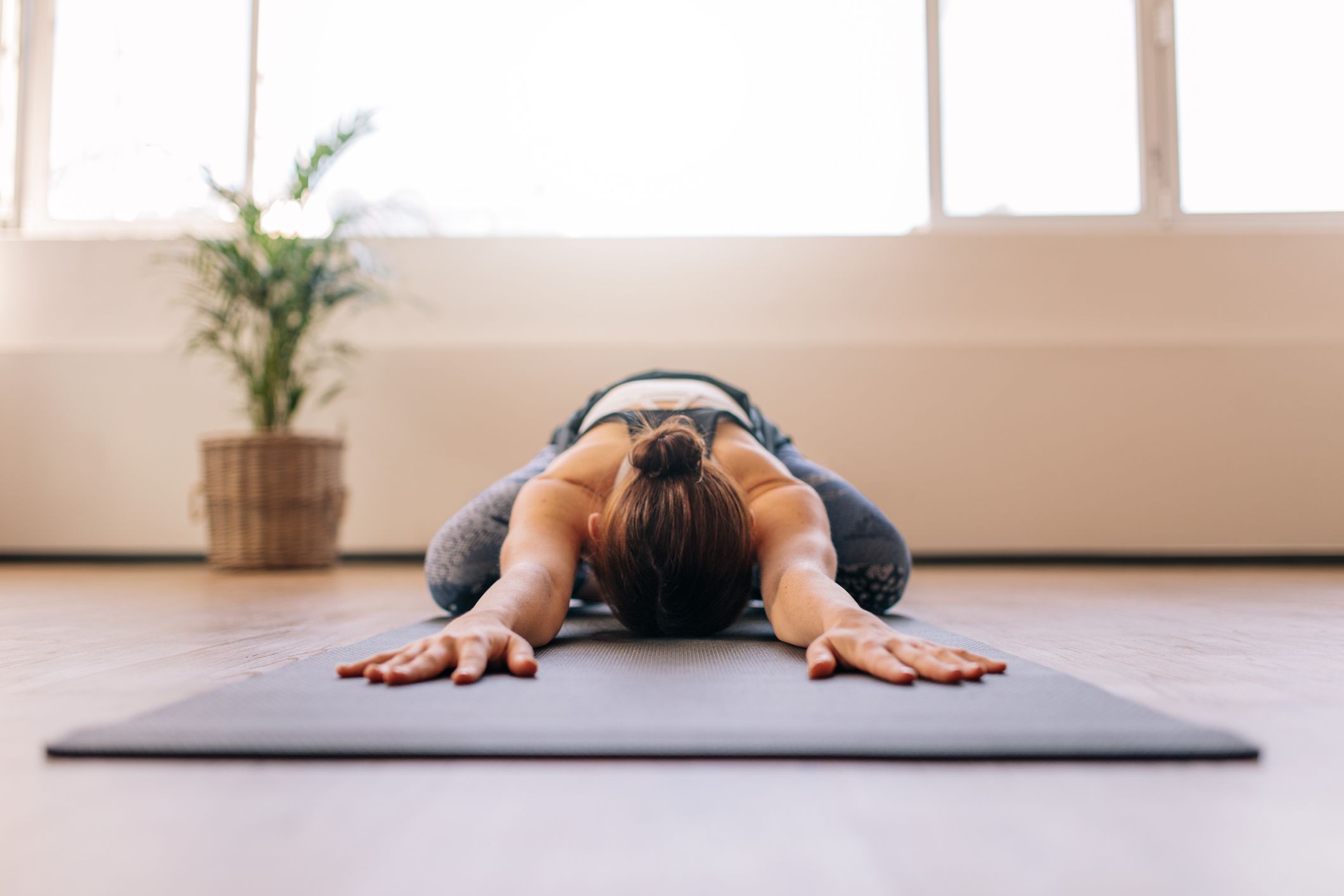
New To Yoga in Brighton?
It can feel daunting walking into your first yoga class and we appreciate the courage it can take to make that first step.
We know from experience that the vast majority of people here in Brighton, love their first yoga class. It is often the start of an ongoing habit that helps them to feel great. People come to yoga for the many physical benefits. From wanting to build physical strength, to increase mobility, to release stiffness aswell as to prevent and repair injury. When people do yoga regulary, they start to feel the mental benefits that yoga provides. For example, releasing of stress, a reduction in anxiety, a feeling of calmness and an increase in clarity. Perhaps you have a friend who raves about yoga, or know someone that wouldn’t miss their class for anything? Once you experience for yourself the transformative qualities of yoga, we think you’ll understand why.
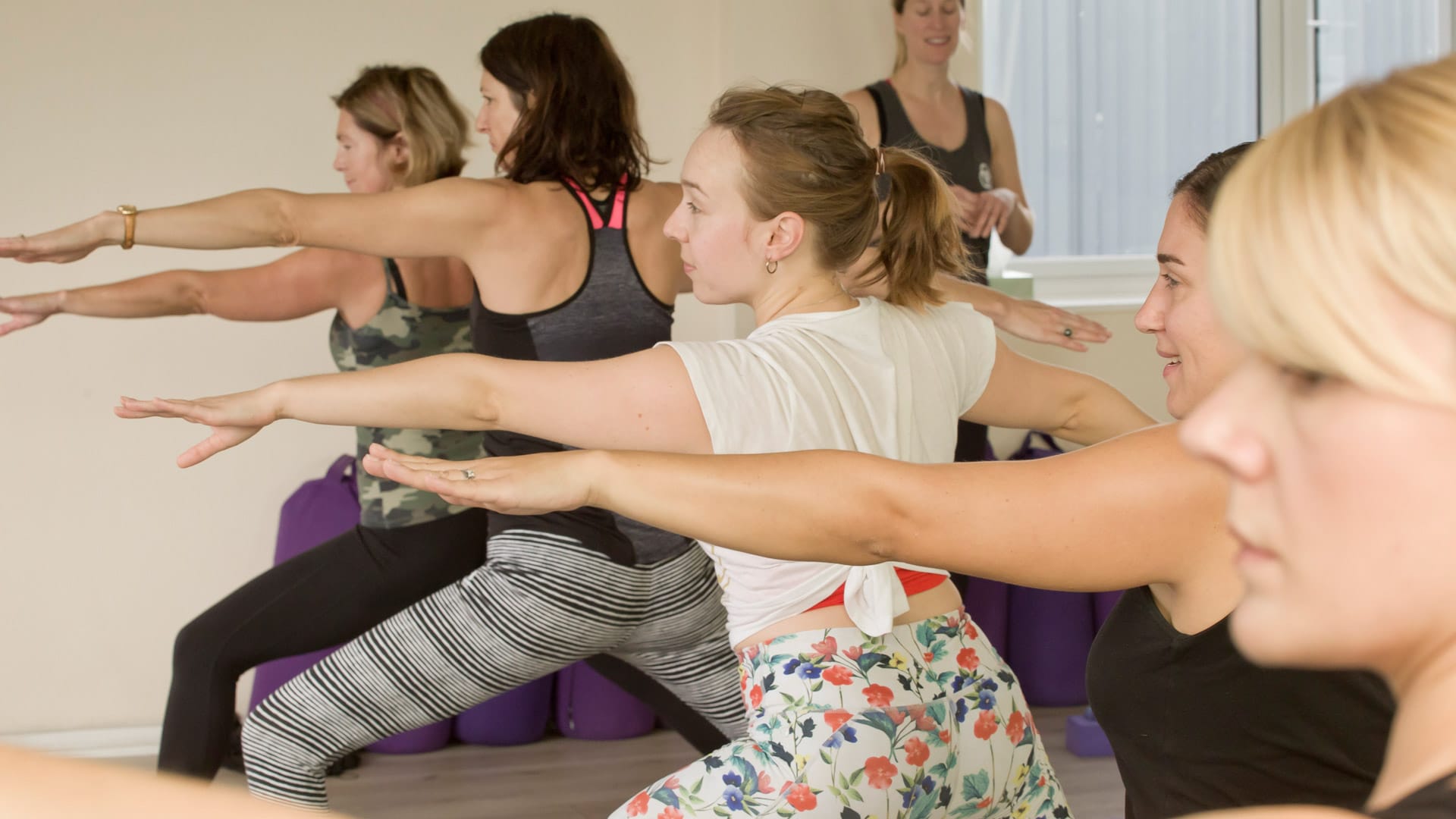
INTRO OFFER: First Class for £10
*Available to new participants only & max 1 per person.
First Class for £10
*Available to new participants only & max 1 per person.
Attending your first yoga class with us in Brighton
If you are brand new to yoga we recommend attending a Gentle Yoga Flow class as your first class. Classes can be booked here. The Gentle Flow classes are a slow and simple flow of postures taught in a very accessible way, with various levels of challenge. They are therefore a great introduction to the practice.
Each class targets an area of the body that we aim to stabilise and strengthen, as well as stretch and release. The difference in how you feel, between walking into the class and walking out can be huge. Plus that’s all without needing to break a sweat or twist yourself into a pretzel!
If you have a fair base level of fitness the Strong Flow Yoga classes can also be a great place to start. They are also taught in a way to allows you to pick the version of the pose that suits your level. These are, as the name suggests, stronger and also a little faster too, but with that comes great fun.
Yin Yoga is a very slow form of yoga that is focused on releasing and stretching. Yin is open to anyone no matter your experience and so can also be a great place to start. We lovingly call this one the ‘antidote to life’ for its ability to de-stress and release tension.
What do I need to start practicing yoga?
The short answer is nothing. If possible please bring a mat along to class. These can be bought very inexpensively and are easily available in Brighton. We’d suggest buying a low price tag version until you know that you really love the practice. If you are not able to bring your own mat we have some spare mats at our Brighton based yoga studio.
We also recommend practicing in comfortable clothing that moves with you when doing yoga poses, such as leggings, tracksuits or shorts.
All props used in the class will be given out so you do not need to bring anything else. The most utilised prop is the humble Yoga block or Yoga Brick. This provides a solid structure to lean on or sit on which adds support. They can also be used in creative ways to add more challenge.
Yoga straps also come in really useful to help us to reach our toes if we need, a helpful tool to deepen our practice.
Yoga bolsters help us to relax by providing firm support under the body and are an integral part of our deeply releasing Yin Yoga practice.
How do I know which type of yoga is right for me?
Variety is the spice of life and we have many different types of yoga classes at our Brighton Studio. We suggest that if you’ve not tried much yoga before to start with the Gentle Flow or the Yin Yoga practice.
Then we would suggest trying our Strong Flow yoga to see what type feels best for you. We believe that there is a type of yoga for everyone, it’s just about finding the right one for you. This may change over time, so even if you’ve been practicing yoga for a while it’s great to try new things. In addition it is a well researched phenomenon that the body responds best to constantly changing stimuli. So, with Energy for Life, no two yoga classes are the same. In addition to the variation within the style, it is a great idea to practice a variety of styles.
Further more, add more spice and variety to your training by trying Pilates, Functional Fitness and Strength. We are lucky to be able to offer such a varied timetable at our Brighton studio. Most people surprise themselves by falling in love with a class they have never considered trying before. All classes are fine for beginners to attend.
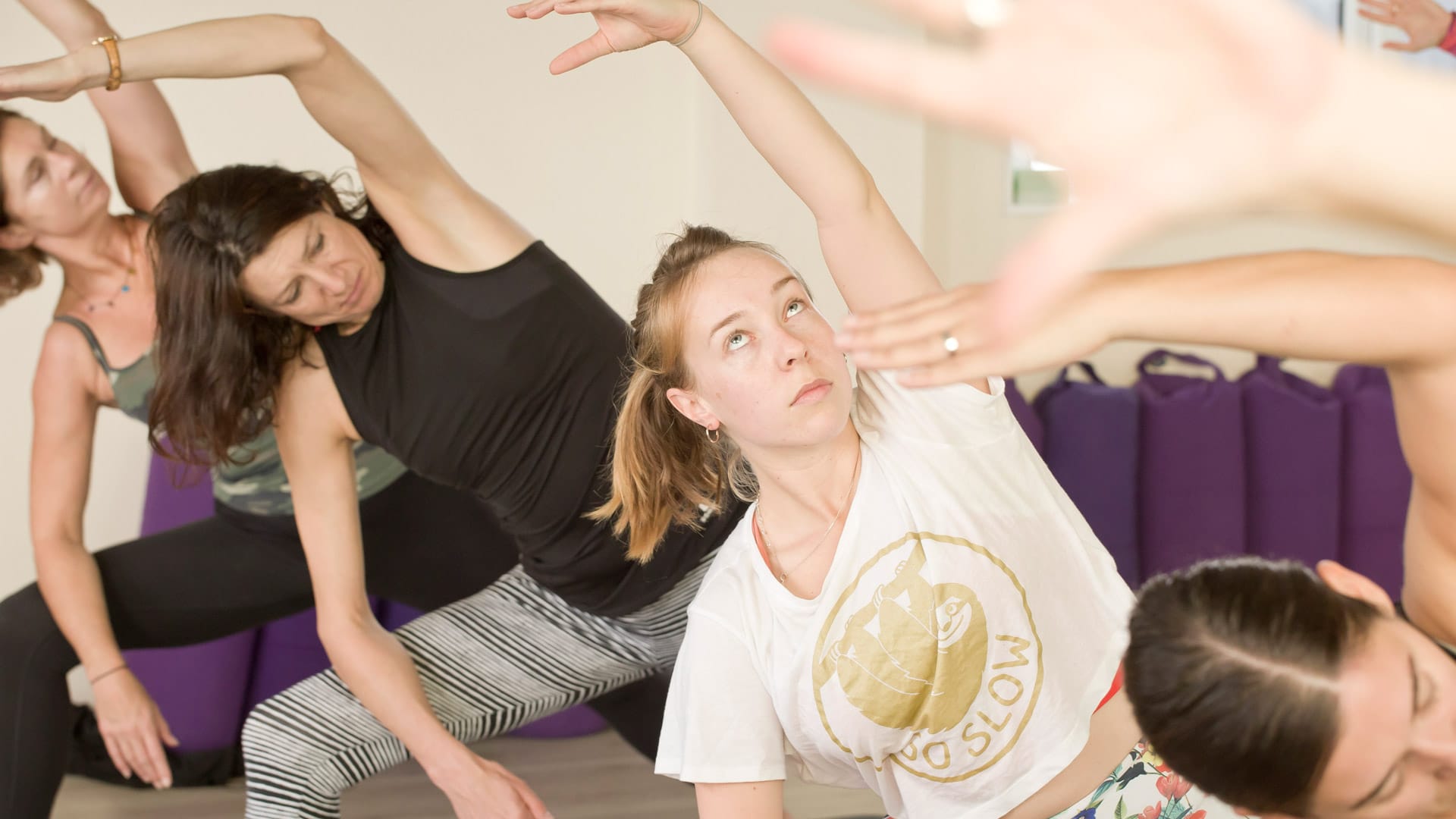
Do I need to do anything in preparation for my first yoga class at your Brighton-based studio?
No, there is nothing you need to do before your first yoga class.
As with any movement class it may not be optimal to eat a big meal and then partake in a class immediately afterwards, so we suggest allowing 2 hour after a meal before coming to class.
Can I do Yoga at home?
Of course, doing Yoga at home is a great way to keep practicing what you’ve learned during your yoga classes.
If you feel that you have difficulty getting to our studio yoga classes here in Brighton, then we have a wealth of classes accessible via our Recorded Class Membership for just £12 per month. The library offers over 500 classes across many styles of movement and at a variety of class lengths too so you can fit it in and around whatever else you have on.
A Bit About Yoga
Below we’ve aimed to introduce you to some useful information about the amazingly deep and broad practice of yoga, none of which is essential reading to practice but can be a very interesting place to start and highly informative. We’ve also outlined some of the traditional foundational poses to give you a brief introduction of what to expect.
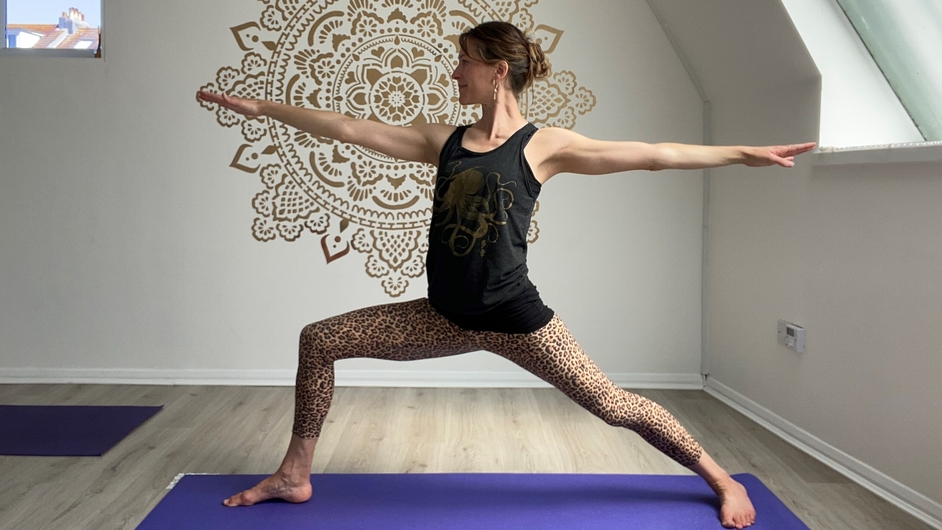
What is Yoga?
Yoga is said to have originated in ancient India some 5000 years ago. However, it is thought by some that the movements we know today as Yoga are a relatively recent evolution of the practice. Yoga, as a traditional practice was intended to unite the mind, body, and spirit and was a philosophy used for self-discovery. As such, these teachings have inspired our modern classes with eastern philosophies and yogic wisdom.
The Philosophy Behind Yoga
We appreciate that some people can be put off yoga due to the perceived “woo-woo” factor. However, if the yoga philosophy is understood well and taught simply it is very down to earth and accessible. For instance, there have now been hundreds of studies scientifically proving the benefits of Meditation. It is this bringing together of the ancient eastern philosophies with the modern scientific proof that excites us and inspires our class themes. The benefit of teaching with philosophical themes rather than solely focusing on the physical movements is that it encourages the development of awareness in our lives. Which can be a rapid path to feeling happier, healthier, and living a better life.
What is the goal of Yoga?
There are many different schools and styles of Yoga which can be confusing. Their common goal, however, is to rid the body of tension, create physical balance and achieve a state of tranquility of the mind. The main way this is achieved in the west (including Brighton) is through the practice of yoga postures (asanas), breathing techniques (pranayamas), and meditation or relaxation (Samatha).
Yoga is also a great practice to develop mindfulness which has been shown to reduce anxiety. As we know, we need to repeat tailored movements in order to build certain strength in our muscles. The same targeted consistency can be applied to training our minds to be less busy, less stressed, and less worried. Mindfulness when practiced regularly like during your yoga practice can have a huge impact on how calm you feel, not just after the class but into your week ahead.
Yoga is accessible for people of all ages, abilities, and backgrounds.
The Benefits of Yoga
If you’re looking for a way to improve your physical and mental health, then Yoga is a very well-rounded solution.
Physical Benefits
Yoga’s physical benefits are numerous and below are just a few:
- increased flexibility
- improved muscle strength and tone
- better respiration, energy and vitality
- maintaining a balanced metabolism
- weight reduction
- cardio and circulatory health
- enhanced athletic performance
- protection from injury
- regulates blood pressure
The benefits go far beyond the normally mentioned areas of strength and mobility. They have a positive impact the body and its systems in many diverse and coherent ways.
Mental Health Benefits
The mental benefits of practicing yoga have also been the subject of much scientific research in recent years and the evidence of its incredible impact to mental health is conclusive.
For example, a one-hour yoga practice has been proven to reduce anger by 45%, sadness by 27%, and anxiety by 65%. Studies have shown that it also helps to slow the aging process by releasing DHEA, an anti-aging hormone. In addition, it can help improve memory function by releasing serotonin which plays a significant role in balancing mood and sleep quality.
Just like with the physical benefits above, the mental benefits are wide-reaching.
Meditation & Yoga
Meditation and mindfulness are weaved into every yoga class that we teach at Energy For Life. Yoga practiced in a mindful or meditative way is the quickest path to receive the benefits mentioned above.
If you’ve not practiced meditation before it can be daunting to know where to start. By entwining it into yoga practice, it becomes easy. Meditation simply means ‘to focus’. So we are intentionally focusing on our breath and our body as we move through the poses. This allows the internal conversation that is normally occurring in our heads (planning or worrying etc) to take a rest. It is incredible to experience how something so simple can completely change how we feel by the end of the class.
At the end of the class you will most likely feel in a completely different state to where you were when you began. Leaving the class you are likely to feel calm, at ease, happy and light.
Yoga Breathing Techniques: Pranayama
Ujjayi Pranayama
A breath technique that is predominantly used in the flow classes and is translated as “victorious breath”. It is an audible breath to help us create a rhythm with our movements and a mental presence. It is both stimulating, soothing and has a brilliant calming effect on the nervous system.
Nadi Shodhana Pranayama
Re-balancing yogic breathing technique that aims to balance the breathing right to left. We block one nostril at a time and breath through the other nostril, and then alternate to the other side. This practice helps slow down the metabolism and the nervous system, decreasing stress levels and increasing blood flow.
Kumbhaka Pranayama
This is a technique that we sometimes start a class with as it calms us down and improves mental clarity. Kumbhaka roughly translates as ‘breath retention’. So it is simply the holding of the inhale or the exhale for slightly longer than is normal.
Kapalabhati Pranayama
A breathing technique that starts with us breathing in deeply. Then quickly pulling in our belly to push the breath out of the mouth. This is one of the more advanced techniques and rarely taught . It is great at cleaning out toxins.
Foundational Yoga Postures (Poses)
Child’s Pose
Child’s pose is the pose that we often start our classes with and is a resting pose that requires no effort whatsoever. Its purpose is to stretch the body’s posterior chain by relaxing the hips, lower back, shoulders, and neck muscles.
Here is how you do it: Kneel on the floor with your toes together and your knees hip-width or wider apart if it feels comfortable. Bring your chest down to touch the tops of your legs and let them relax. Rest on your elbows or forearms if you want to. If you have ankle or knee mobility issues then an alternative pose will be offered. Here is Emma in childs pose, shot in our Brighton yoga studio.
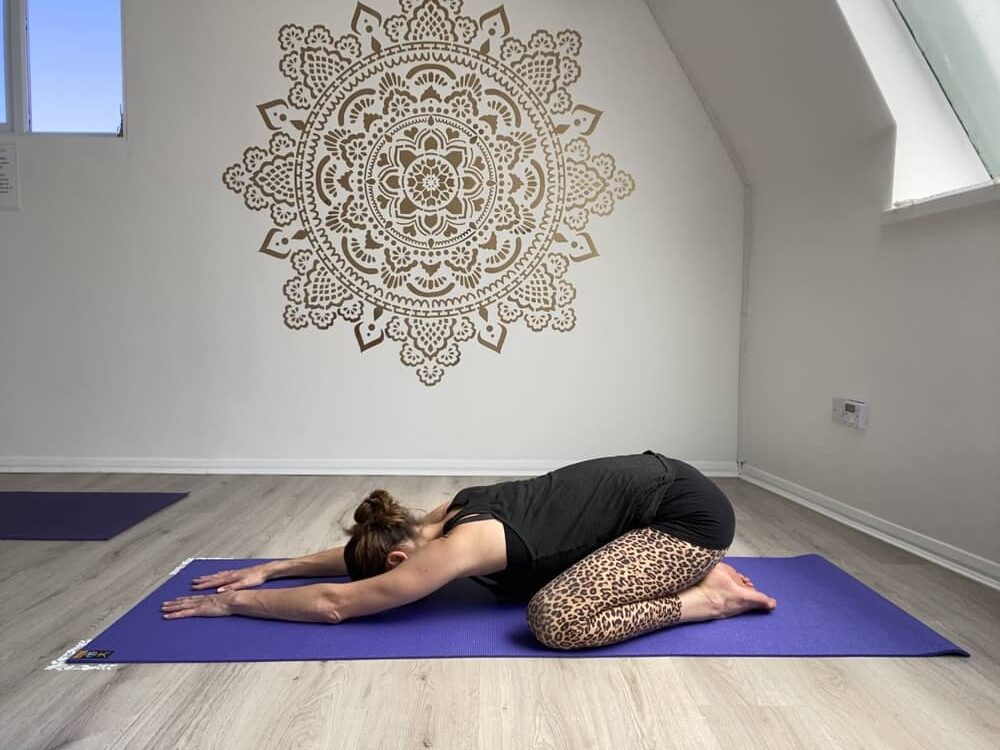
Cobra Pose
Cobra Pose is a great pose for building strength in your back. It is often done early on in the practice as an effective warming for the back and core muscles as well as a gentle stretch of those muscles. It can be used as a less intense version of the flow sequence, like for new starters.
Here is how you do it: lie on your stomach with both hands underneath the shoulders or beside the ribs. Engage your legs by pushing your feet into the floor. Gently pull the belly button up toward the spine while lifting your chest off the ground. Squeeze your shoulder blades together to pull the shoulders back and down. Continue to lift for a few breaths before releasing.
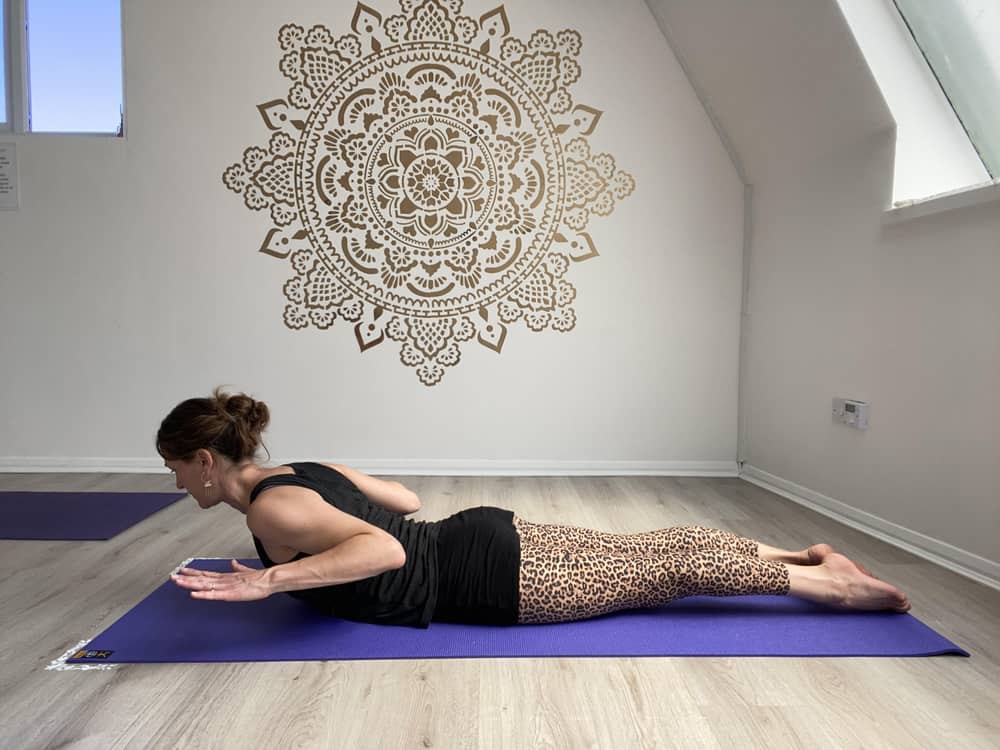
Downward Facing Dog
This is the most visited pose in most yoga classes and if you are new to yoga can be deceptively challenging. As it is an inversion with the heart above the head it can be a good boost to our circulation. It opens up the chest and shoulders, releases the back of our thighs (our hamstrings) and helps to stretch our spine. It is great for improving our posture.
Here is how you do it: From kneeling, reach forward to have your hands at the front of the mat and your feet at the back. Lift your hips to the sky to position your body into an inverted ‘V’ position. Have knees slightly bent and try to reach your sit bones to the sky whilst your heels reach for the earth. Push your fingertips and knuckles into the mat to support your wrists, and press your heart to your ankles to stretch the chest.
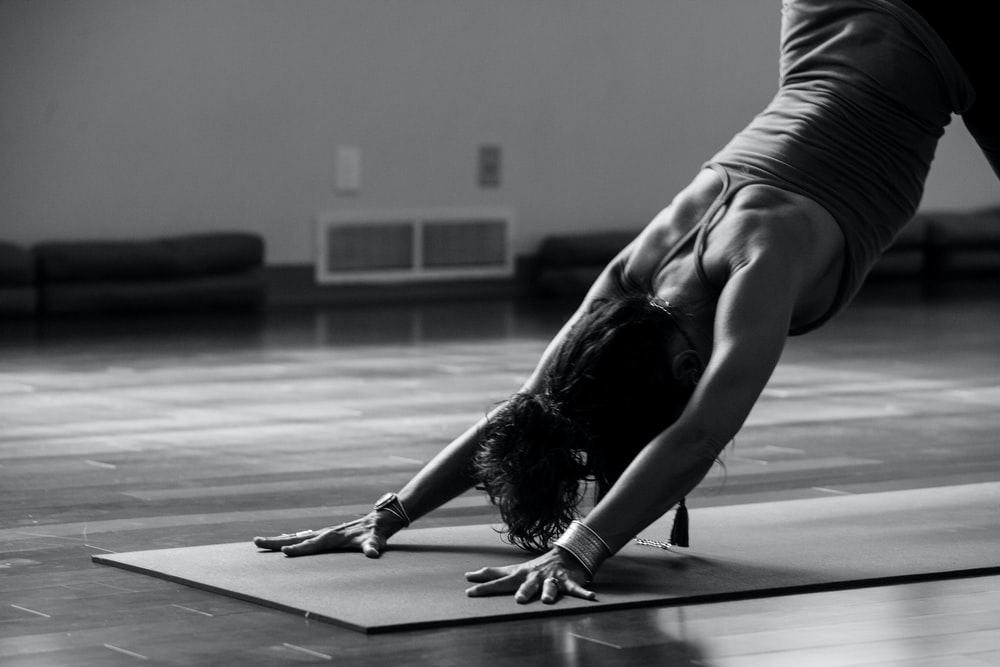
Yoga Postures Continued
Low Plank Pose (Chaturanga)
This increases the challenge of the High Plank pose above.
Here is how you do it: From a high plank position, press into your hands to engage the shoulders. Then start to bend your elbows aiming to keep your elbows above the wrists. Because the elbows stay above the wrists, the shoulders come forward and down. Stop when your shoulders are at elbow height so you have lowered your whole body half way down to the floor. Hold for a breath or two and then lower to the floor.
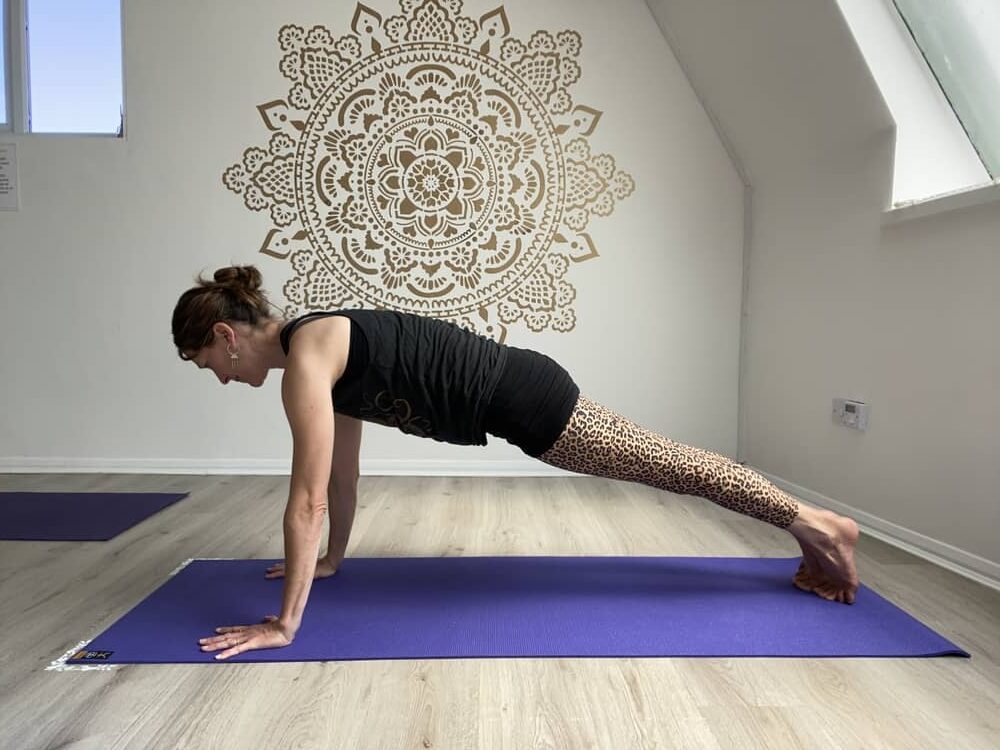
Warrior I
Warrior I stretches not only muscles but also fascia because this pose requires tractioning the thigh muscle while lengthening the back leg’s hamstring at its optimum angle. Warrior 1 has tremendous benefits in increasing flexibility and range motion.
Here is how you do it: Stand facing forward. Step your left foot backwards about four feet. Turn the left foot outwards to forty-five degrees while the right foot points straight ahead. This will create stability as well as balance in your legs. Now bend your front knee and lower your hips a little more down towards the ground. Reach up to the ceiling with your arms at shoulder width.
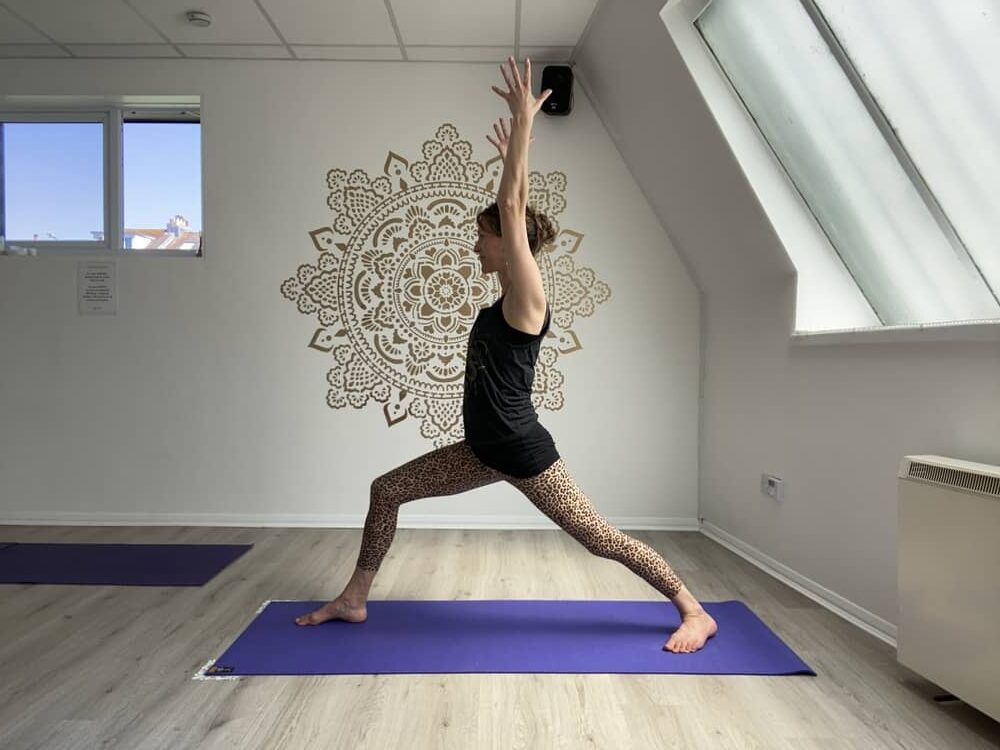
Warrior II
Here is how you do it: From Warrior I, open your chest and hips to face the side wall, instead of facing the front wall. Open the angle of the left foot to ninety degrees if more comfortable. Reach to the front of the room with your right arm and the back of the room with your left hand. Bend more into the right knee and lower a little for more challenge. Encourage your right knee to stay above the right ankle by moving it to the right.
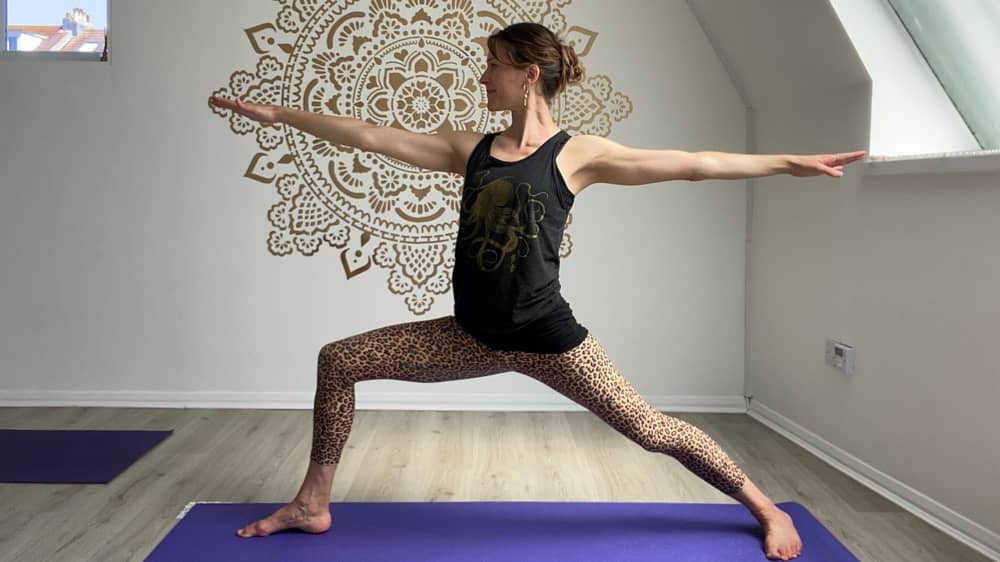
Tree Pose
The tree pose is a balancing pose and helps build better balance. It strengthens the legs and core while opening the hips and stretching the inner thigh and groin muscles
Here is how you do it: From standing bring your right foot up to rest on the left inner thigh. Widen the right knee out to the right hand side. Press firmly into both feet to activate the legs. To increase the challenge reach to the ceiling or look up to the ceiling. If this is easy, try closing your eyes in the pose and maintaining balance.
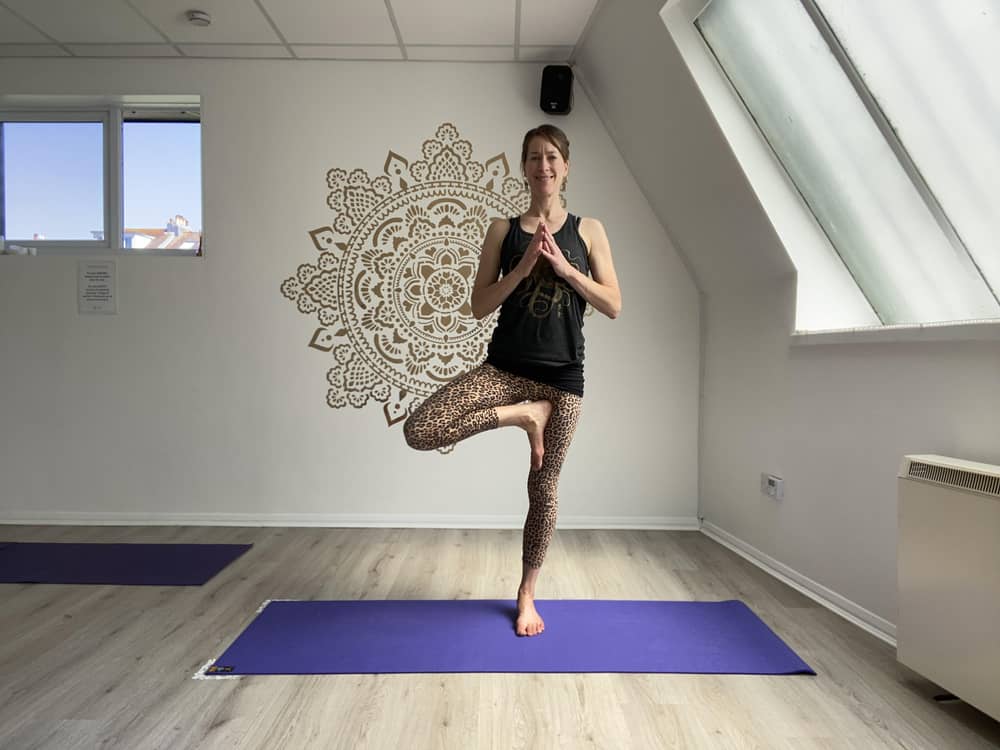
Half Pidgeon Pose
Half Pigeon Pose is an excellent stretch for the inner thigh and the outer hip. You can start this from a downward-facing dog pose.
Here is how you do it: Step your right foot towards your left wrist and lay the right knee by the right wrist. If your hips are fairly tight you can guide the right foot back towards the left hip. Come down onto your elbows and pause, or if accessible reach your arms forward and lay down completely. Here is Emma demonstrating half pidgeon pose, taken in Energy for Life’s yoga studio, Brighton.
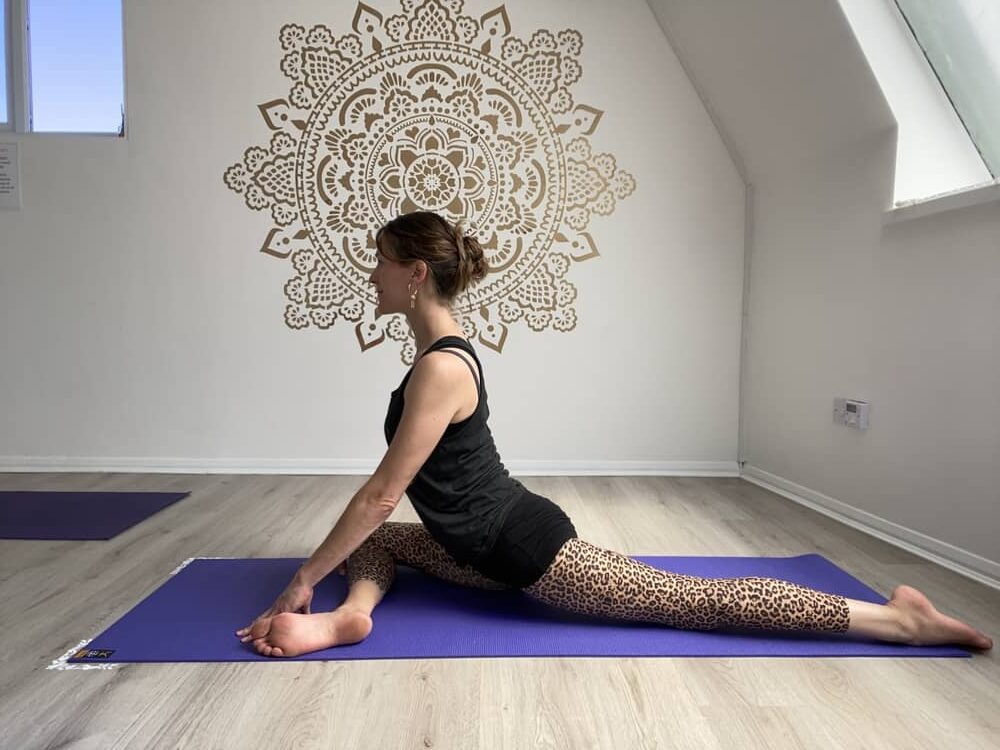
Contact us
+44 (0)7555 058 983
tom@energyforlifefitness.com